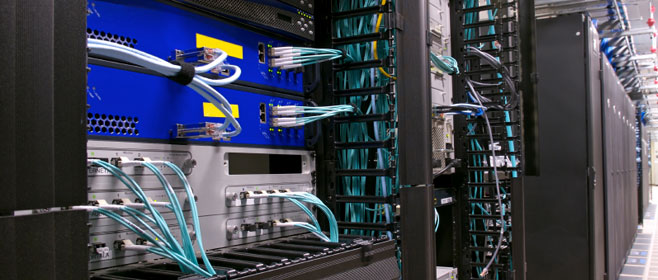
Cabling Tips for Data Center Management
 Whenever there is an IT systems issue, the resolution can often be delayed by poorly structured cabling. Enterprises often turn to their IT staff or an electrical contractor for cabling, but they would be wiser retaining a professional cabling service with years of experience. The following are important cabling tips for data center management.
Whenever there is an IT systems issue, the resolution can often be delayed by poorly structured cabling. Enterprises often turn to their IT staff or an electrical contractor for cabling, but they would be wiser retaining a professional cabling service with years of experience. The following are important cabling tips for data center management.
Highest Quality for Budget
As expected, higher quality cabling materials are more costly, but have superior performance. For example, gold connectors have greater resistance to corrosion, but they will also be more expensive than lower-quality connectors. If your firm’s cabling will be difficult to access or located in a corrosive environment, cables with gold connectors will be the right choice.
Cabling Capable of Company Volume
Category 5, 5E and 6 are cable types and each has its own capabilities in terms of the amount of data carried, speed of transmission, and distance covered. Consult with a professional network cabling service to discuss your present and future requirements in order to select the proper cabling.
Fiber Optic for the Future
Companies expecting large data volumes in the future or requiring longer distances should select fiber optic cables. Retain expert cabling professionals because fiber optic installation will entail particular requirements that can be complex.
Accurate Measuring for Planning
When the recommended span is exceeded, cable becomes more vulnerable to distortion, degrading data quality and speed. IT staff with limited experience may not properly measure the entire distance by not accounting for corners or obstacles.
Margin for Future Modifications
The office may be reconfigured or cable connections may be moved in the future. Thus, it would be wise to allow some margin for future modifications by providing plentiful slack for each cable installed.
Labeling for Organization
An IT team should know precisely where a cable starts and terminates. Clear labeling enables faster tracing of faults, minimizing downtime and resulting losses in revenue. Cabling service professionals carry out proper labeling as a matter of routine.
Progressive Office Cabling
Founded in 1986, Progressive Office’s success has been a direct result of years of commitment to seeking solutions on behalf of their clients in the Washington, D.C. and New York City areas. Efficiently working together, their teams get cabling installed and operating as fast as possible while minimizing disruption and downtime. Call their toll free number (800) 614-4560 today.


 Modern data centers are equipped with devices and networking equipment that connect them. These devices demand increasingly greater bandwidth, and so their fiber or copper
Modern data centers are equipped with devices and networking equipment that connect them. These devices demand increasingly greater bandwidth, and so their fiber or copper 
 The structuring of cabling will result in better organization and easier management of the cables. If you are a building manager or business owner, you may already know a bit about
The structuring of cabling will result in better organization and easier management of the cables. If you are a building manager or business owner, you may already know a bit about 
 The conventional process of
The conventional process of 





 communications, because light propagates through the fiber with little attenuation compared to electrical cables. This allows long distances to be spanned with few or no repeaters. Additionally, the per-channel light signals propagating in the fiber can be easily modulated at 1 Gb/s.
communications, because light propagates through the fiber with little attenuation compared to electrical cables. This allows long distances to be spanned with few or no repeaters. Additionally, the per-channel light signals propagating in the fiber can be easily modulated at 1 Gb/s. rt distances, up to 550 m (600 yards), and single-mode fiber used for longer distance links. Because of the tighter tolerances required to couple light into and between single-mode fibers (core diameter about 10 micrometers), single-mode transmitters, receivers, amplifiers and other components are generally more expensive than multi-mode components.
rt distances, up to 550 m (600 yards), and single-mode fiber used for longer distance links. Because of the tighter tolerances required to couple light into and between single-mode fibers (core diameter about 10 micrometers), single-mode transmitters, receivers, amplifiers and other components are generally more expensive than multi-mode components.